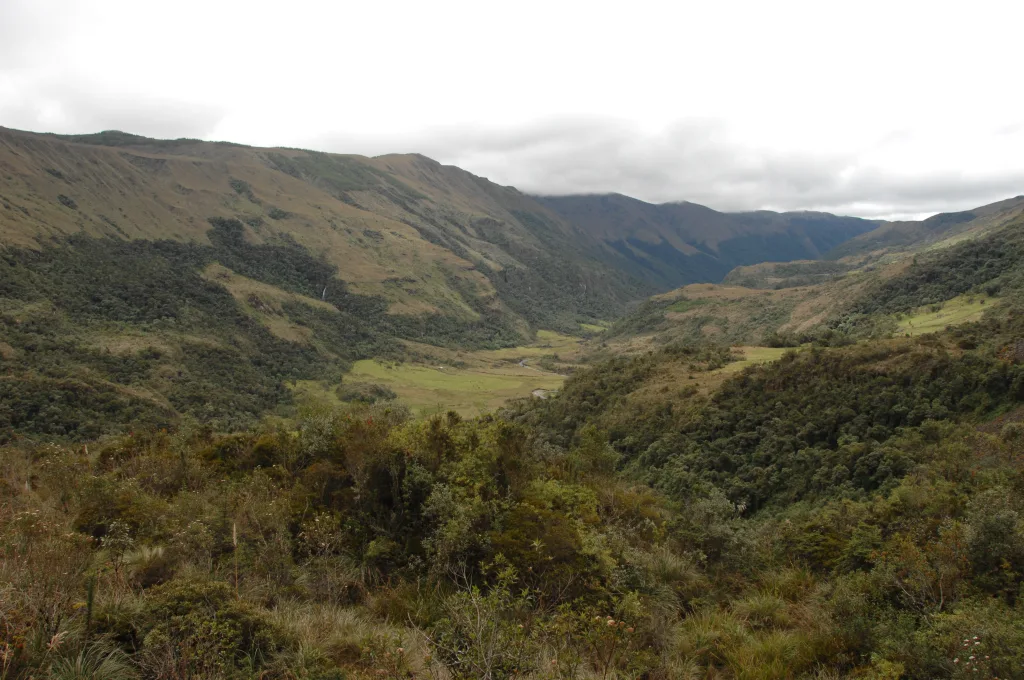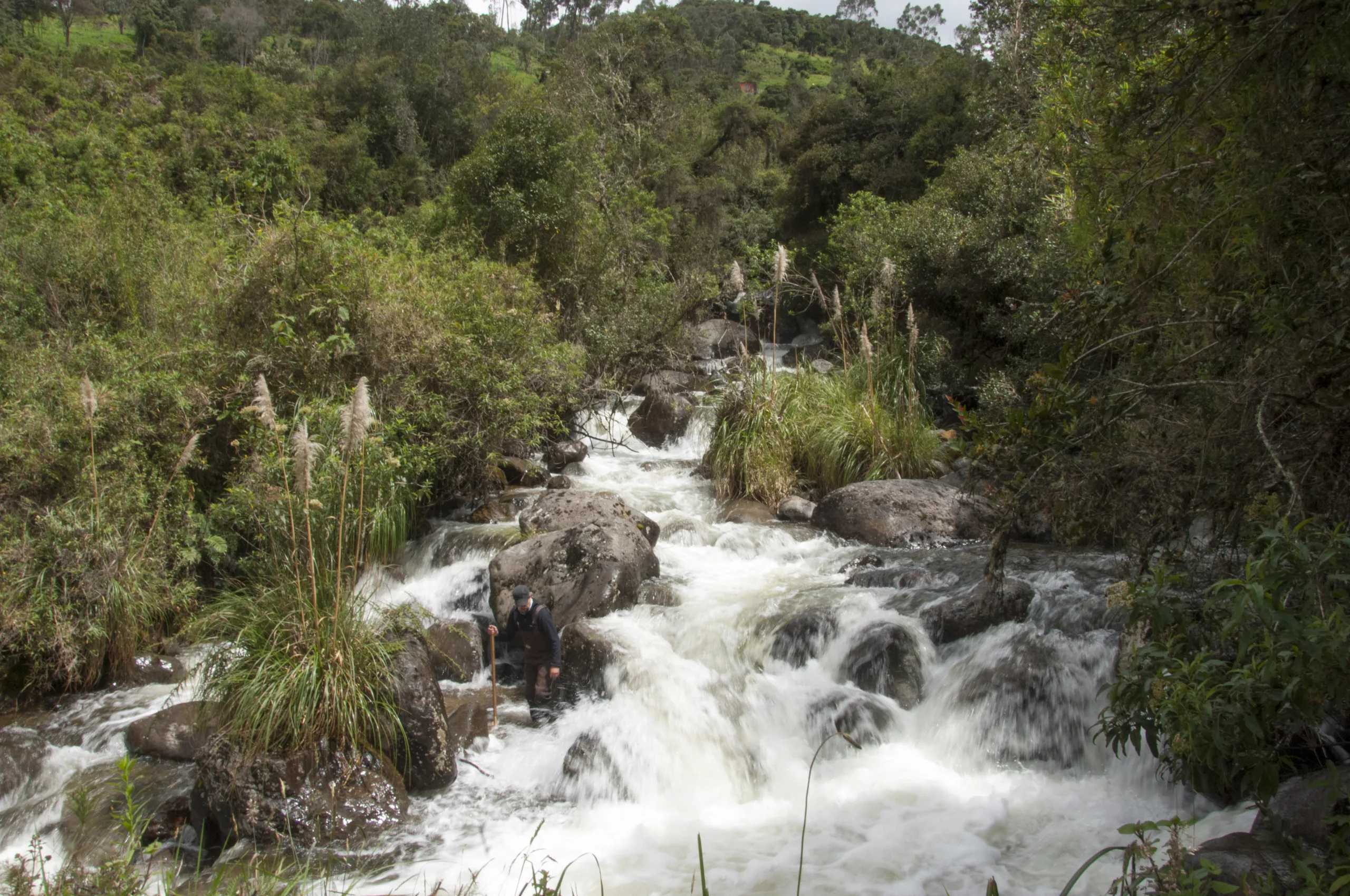Machángara Tomebamba declared a ‘Wildlife Refuge’
10/05/2023
- On September 22, 2023, Ecuador’s Ministry of Environment, Water, and Ecological Transition officially declared the Machángara Tomebamba Wildlife Refuge.
- The area protects 61,673.15 acres of fragile high Andean ecosystems.
- Its conservation is especially important for the local water supply, providing more than 60% of drinking water to the region.
The Machángara Tomebamba Wildlife Refuge, an invaluable natural treasure spanning 61,673.15 acres in Ecuador, has been included in the National System of Protected Areas under the category of ‘Wildlife Refuge,’ in an effort to ensure its long-term protection and conserve its rich biodiversity. Located between the provinces of Azuay and Cañar in southern Ecuador, Machángara Tomebamba is now a new core area of the Cajas Massif Biosphere, recognized by UNESCO May 29, 2013.

Since 1985, Machángara Tomebamba has been recognized as an “Area of Forest and Vegetation Protection” due to its vital role in providing essential services to the region. These services include supplying water for human use, irrigation, maintaining ecological balance, supporting industrial activities, and enabling hydroelectric power generation.
Over the past 25 years, various organizations have collaborated through the ‘Machángara River Basin Conservation Committee’ to implement a range of strategies to effectively manage the area and ensure the sustainable use of its natural resources. These efforts include promoting responsible agricultural practices, raising environmental awareness among the local population, conducting scientific research, monitoring the area, and fostering social responsibility. All of these endeavors are aimed at achieving the goal of harnessing the natural wealth of the area while preserving its ecological integrity.
The declaration of the Machángara Tomebamba Wildlife Refuge as part of the National System of Protected Areas reflects the strong commitment at both local and national levels to safeguard these high Andean ecosystems. Furthermore, its protection is of particular importance for Cuenca, since it supplies more than 60% of drinking water to this canton.

Connecting to Nearby Protected Areas
The Machángara Tomebamba Wildlife Refuge improves the connection between ecosystems by linking with Cajas National Park (established in 1977), the Mazán Decentralized Autonomous Protected Area (established in 2021), and the Curiquingue – Gallocantana Decentralized Autonomous Protected Area (established in 2022). This connectivity is vital for ensuring the long-term sustainability of essential environmental services like supplying drinking water, regulating water flow, storing carbon, and supporting ecological processes.
A Biodiverse Paradise
The Machángara Tomebamba Wildlife Refuge is home to an astonishing diversity of flora and fauna, with a total of 522 identified species, including some that are endemic to the region. Of these, 5 species are critically endangered, 13 are endangered, 31 are vulnerable, and 21 are near-threatened. Additionally, 28 species are listed in Appendices I and II of the Convention on International Trade in Endangered Species of Wild Fauna and Flora (CITES). In essence, this listing in CITES signifies that international measures and protections are in place to safeguard these 28 species and prevent their exploitation through trade, helping to protect their populations and conserve biodiversity.
Prominent species that rely on this habitat include the Andean bear (Tremarctos ornatus), the Andean condor (Vultur gryphus), the white-tailed deer (Odocoileus virginianus), as well as several amphibian species. Preserving these species is crucial for safeguarding Ecuador’s biodiversity and their contribution to maintaining the equilibrium of local ecosystems.


An interesting fact is that in 2018, the species known as the ‘Sange Cutín’ (Pristimantis erythros) was described. This amphibian is distinguished by its bright red coloration, which is due to its poisonous skin. It exclusively inhabits the Machángara Tomebamba páramos, with a very limited distribution, which classifies it as ‘Endangered.’
A Milestone for the Conservation of Machángara Tomebamba
Despite existing conservation efforts, the Machángara Tomebamba Wildlife Refuge faces constant threats that endanger its future. Therefore, it is imperative to provide it with a legal status that ensures its long-term protection and supports ongoing conservation efforts.
The designation as a ‘Wildlife Refuge’ marks a significant step towards the protection and conservation of this natural treasure and reinforces Ecuador’s commitment to biodiversity and the well-being of local communities.
“With this declaration, the city of Cuenca now has 5 protected areas within the National System, as part of a strategy that adds to local efforts to preserve its páramos and forests, which are crucial for its present and future.”
Fabián Rodas, Coordinator at Nature and Culture International

COLLABORATION FOR LONG-TERM CONSERVATION
The Machángara Tomebamba Wildlife Refuge is a precious corner of Ecuadorian biodiversity, home to unique species and a key provider of essential environmental services. Its designation as a “Wildlife Refuge” strengthens its conservation status as a legacy for future generations.
This declaration is the result of collaborative work involving the Ministry of Environment, Water, and Ecological Transition, the Machángara River Basin Conservation Committee, ElecAustro, ETAPA EP, the Environmental Management Commission, the Machángara Irrigation and Drainage Board, and the Socio Bosque Project. With technical support from Nature and Culture International and funding from the Andes Amazon Fund.


